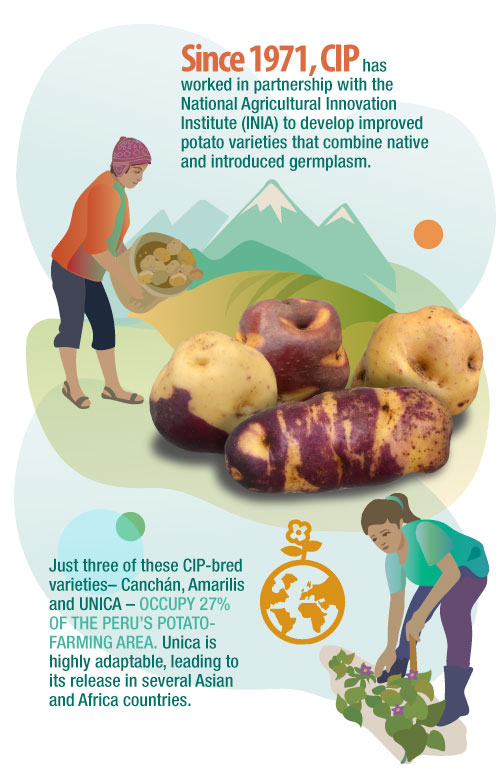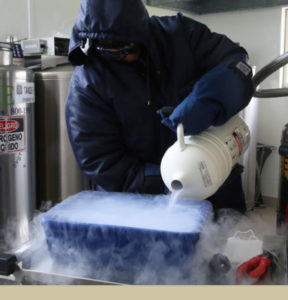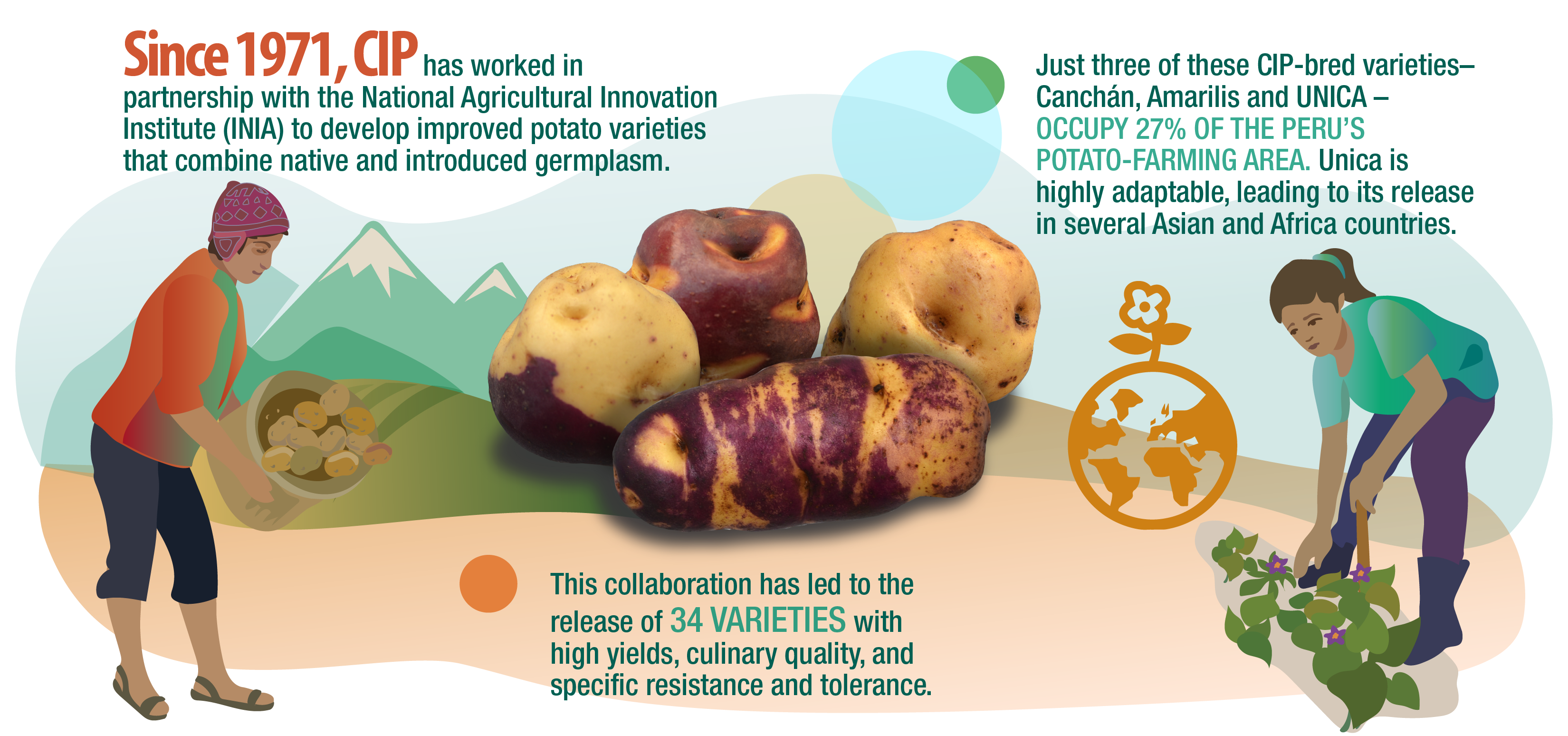INNOVATIONS
Widespread adoption of potato varieties foster income and food security in Peru
- Nutrition and food security
- Poverty reduction, livelihoods and jobs
- Climate adaptation & greenhouse gas reduction
- Environmental health & biodiversity


Adoption or impact at scale.
Taken up by ‘next users’
Start date: 1983 | End date: ongoing
Since its inception in 1971, the International Potato Center (CIP) has worked in partnership with the National Agricultural Innovation Institute (INIA) of Peru on the development of improved potato varieties that combine native and introduced germplasm. This has led to the release of 34 varieties adapted to the diverse agro-ecologies of the Andes and coastal lowlands. Besides high yields and culinary quality, these varieties have specific resistance and tolerance to biotic and abiotic constraints such as late blight disease and drought.

Peru lies within the potato’s center of origin and has the world’s greatest potato diversity. Nearly 40% of Peru’s potato farming area is planted with native potatoes. Thanks to the high yields and disease resistance of the CIP-bred varieties, they were grown on more than 90,000 hectares in 2014. This represents one third of Peru’s total potato area, or half of the area planted with improved varieties. Just three CIP-bred varieties– Canchán, Amarilis and UNICA – occupied for 27% of the country’s potato-farming area. Findings from adoption and impact studies suggest that farmers who grow the CIP-related varieties have higher yields, market a larger share of their output, and earn higher incomes than other potato farmers in their area. While some of those varieties are adapted to certain agroecologies, others are grown in many regions of the country. Amarilis, for example, occupies 40-44 percent of the potato area in northern Peru. Unica, on the other hand, is highly adaptable, grown in both the highlands and dry coastal lowlands and is among the most cultivated varieties in Peru. Its robustness and market-demanded characteristics has made Unica increasingly popular globally; it has also been released in several Asian and Africa countries, and is under evaluation for release in others.
Swiss Development Cooperation; USAID; World Bank.
The CGIAR Research Program on Roots, Tubers and Bananas (RTB); Instituto Nacional de Innovación Agraria Peru; Universidad Nacional San Luis Gonzaga, Ica.






